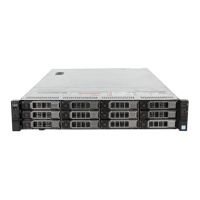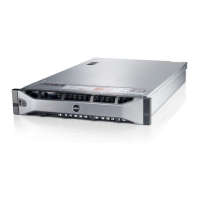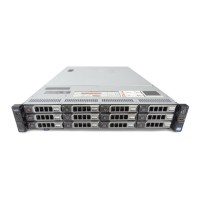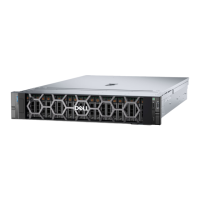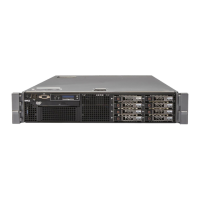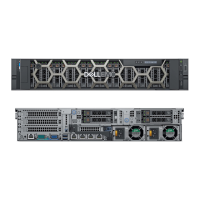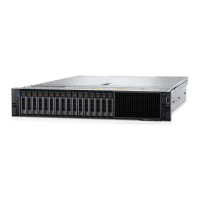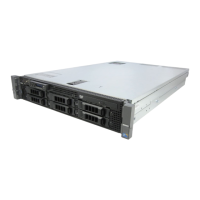Expansion cards and expansion card riser
An expansion card in the computer is an add-on card that can be inserted into an expansion slot on the
computer system board or riser card to add enhanced functionality to the system through the expansion
bus.
NOTE: A System Event Log (SEL) event is logged if an expansion card riser is unsupported or
missing. It does not prevent your system from turning on and no BIOS POST message or F1/F2
pause is displayed.
Expansion card installation guidelines
Depending on your system configuration, the following PCI Express (PCIe) generation 3 expansion cards
are supported:
Table 40. Supported expansion cards
PCIe slot Riser Processor
connection
Height Length Link
width
Slot width
1 1 Processor 2 Low Profile Half Length x8 x16
2 1 Processor 2 Low Profile Half Length x8 x16
3 1 Processor 2 Low Profile Half Length x8 x16
4 2 Processor 2 Full Height Full Length x16 x16
5 2 Processor 1 Full Height Full Length x8 x16
6 3 (alternate) Processor 1 Full Height Full Length x16 x16
NOTE: To use PCIe slots 1 through 4 on the risers 1 and 2, both the processors must be installed.
NOTE: The expansion card slots are not hot-swappable.
The following table provides guidelines for installing expansion cards to ensure proper cooling and
mechanical fit. The expansion cards with the highest priority should be installed first using the slot priority
indicated. All the other expansion cards should be installed in the card priority and slot priority order.
Table 41. Expansion card installation order
Card priority Card type Slot priority Max allowed
1 PCIe Bridge 4 1
2 RAID H730P (low profile) 3, 2 1
3 RAID H830 6, 4, 5 2
RAID H830 (low profile) 3, 2 2
4
100G Intel Omni-Path Architecture
(OPA) Host Channel Adapters (HCA)
4, 6 2
14 Gb InfiniBand, Fourteen Data Rate
(FDR) HCA
3, 2, 1 3
40 Gb NICs (full height) 4, 6, 5 3
128
